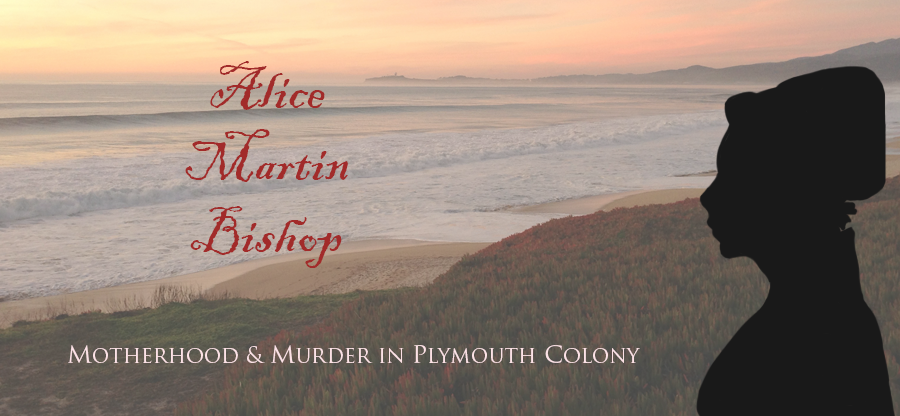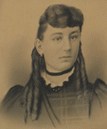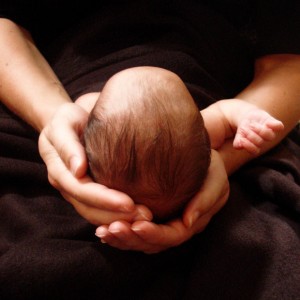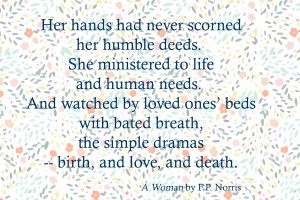Erin Taylor & Kristin Luce, August 2014
Aside from the obvious mystery as to why Alice murdered her child, the questions that keep us up at night are who were Alice Martin Bishop’s (AMB) parents and from where and when did she emigrate? Unfortunately, we simply don’t know. Not until 1646 were Plymouth towns ordered to record every birth, death, and marriage (Davis, 83), and so we’re fortunate to have a record of Alice’s marriage to George Clarke in 1639 and to Richard Bishop in 1644. But where was she in the years before her first marriage? Considering the vast scouring done, across multiple centuries, to locate Plymouth records, we must concede we’ll likely never know the parentage, birth date, and birth location for AMB. This is the part of her story where we have to make our best educated guesses. I already issued a mea culpa for positing that AMB was the daughter of Christopher Martin and Marie Prower, who came over on the Mayflower and died that first winter. And while AMB-as-Mayflower-orphan can’t be definitively disproved, there are other, more likely scenarios for AMB’s existence in late 1630s Plymouth Colony.
Before we explore those scenarios, let’s step back and look at some numbers. According to Martin E. Hollick on the New England Historic Genealogical Society (NEHGS) website, between the years 1620 and 1640, about 20,000 English men, women, and children crossed the Atlantic to settle New England. Of those crossings, we have exactly zero official passenger lists. “What lists we do have were reconstructed by careful analysis of other sources, such as letters, diaries, court records, port books, licenses to travel overseas, admiralty records, and other state papers. However, as a rule, finding the specific ship for any emigrant to New England in the seventeenth century is the exception and not the rule” (AmericanAncestors.org).
Not satisfied with those odds, we continue to look for anyone named Alice Martin (or even something similar), but as of August 2014, we are still batting .000. We have a couple of potential George Clarkes, although they aren’t perfect fits, and a Salem-residing Richard Bishop who reminds us that, unless your ancestor had a really unique name, you often need more verifiable evidence. That’s why we’re thankful for ancestors named Sally Sixkiller and Dorcas Buckminster — they make our work much easier!
Most emigrants came over as part of a family. We assume AMB didn’t have any family in Plymouth because we haven’t found anything in the Plymouth Court Records or other primary sources that link her (or the orphaned Abigail Clarke) to other Martins. But it is very unlikely that a young, single woman, using her own financial resources, could have set off for the New World on her own. So how DID she get here?




